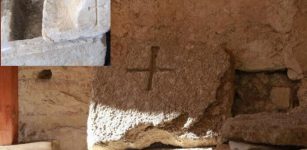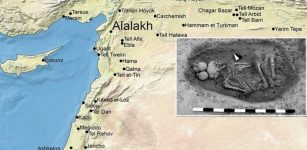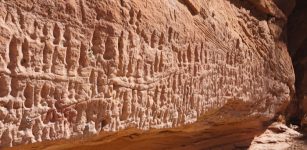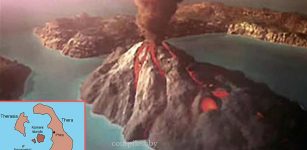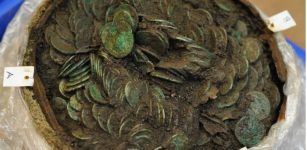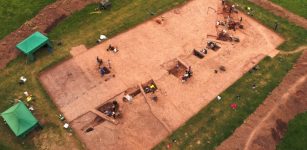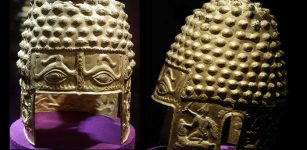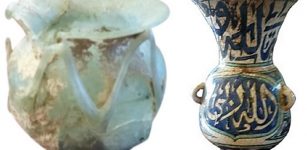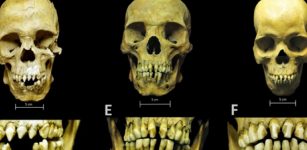Ancient DNA Reveals Easter Island’s Population Collapse Never Occurred
Conny Waters - AncientPages.com - Rapa Nui, also known as Te Pito o Te Henua (the navel of the world) or Easter Island, is one of the most isolated inhabited locations globally. Situated in the Pacific Ocean, it is over 1,900 kilometers east of the nearest inhabited Polynesian island and 3,700 kilometers west of South America.
Despite extensive studies by archaeologists, anthropologists, and geneticists on the island's inhabitants and their rich culture, two pivotal aspects of Rapanui history remain subjects of significant controversy. The first is the theory positing a population collapse through "ecocide" or "ecological suicide" during the 1600s—allegedly resulting from overpopulation and resource mismanagement. The second major debate concerns whether the Polynesian ancestors of the Rapanui had interactions with Indigenous Americans prior to European contact in 1722.
Moai statues on Rapa Nui, Easter Island. Credit: Adobe Stock - Susan
The narrative surrounding Rapanui has frequently been portrayed as a cautionary tale against humanity's excessive exploitation of resources. Following settlement by Polynesians around 1250 AD, Rapa Nui underwent substantial environmental changes. Enormous stone statues known as moai were sculpted and distributed across various parts of the island while its original forest comprising millions of palm trees diminished significantly until it was nearly extinct by the 1600s.
Proponents of the "ecocide" theory argue that a population exceeding 15, 000 caused environmental changes, leading to resource scarcity, famine, warfare, cannibalism, and ultimately catastrophic population decline.
However, recent research by an international team of scientists challenges this theory regarding population collapse on Rapa Nui.
By studying the genomes of 15 Rapanui individuals who lived between 1670 and 1950, the science team concluded that the population collapse on Easter Island never happened. The remains of these 15 individuals are currently hosted at the Musée de l'Homme in Paris.
"While it is well established that the environment of Rapa Nui was affected by anthropogenic activity, such as deforestation, we did not know if or how these changes led to a population collapse," comments Anna-Sapfo Malaspinas, Assoc. Professor at the University of Lausanne and group leader at the SIB Swiss Institute of Bioinformatics, Switzerland, and the last author of the study.
"Our genetic analysis shows a stably growing population from the 13th century through to European contact in the 18th century. This stability is critical because it directly contradicts the idea of a dramatic pre-contact population collapse," says Bárbara Sousa da Mota, a researcher at the Faculty of Biology and Medicine at University of Lausanne and first author of the study.
Through their comprehensive genetic analysis, Moreno-Mayar, Sousa da Mota, Malaspinas, and their colleagues have not only refuted the collapse theory but also underscored the resilience of the Rapanui population in confronting environmental challenges over several centuries until the disruptions brought about by European contact post-1722.
Another longstanding debate among researchers is whether Polynesians ever reached the Americas. Although long-distance maritime navigation using wooden watercraft likely ceased following the deforestation of Rapa Nui, archaeological and genetic evidence from contemporary individuals suggests that voyages to the Americas did occur.
Previous studies examining limited DNA samples from ancient Polynesians dismissed the transpacific voyages hypothesis. Consequently, these findings cast doubt on whether Polynesians reached the Americas and suggested that any inferred contact based on present-day genetic data was facilitated by European colonial activity after 1722.
By generating high-quality ancient genomes from 15 Rapanui individuals, this research team significantly increased genomic data from the island and discovered that approximately ten percent of the Rapanui gene pool has Indigenous American origins. More importantly, they could infer that both populations interacted before Europeans arrived on Rapa Nui and in the Americas.
"We looked into how the Indigenous American DNA was distributed across the Polynesian genetic background of the Rapanui. This distribution is consistent with a contact occurring between the 13th and the 15th centuries," says first author Víctor Moreno-Mayar, Asst. Professor at the Globe Institute's Section for Geogenetics, University of Copenhagen.
"While our study cannot tell us where this contact occurred, this might mean that the Rapanui ancestors reached the Americas before Christopher Columbus," says Malaspinas.
Altogether, the results from the new study help settle longstanding debates that have led to years of speculation surrounding Rapanui history.
"Personally, I believe the idea of the ecocide is put together as part of a colonial narrative. That is this idea that these supposedly primitive people could not manage their culture or resources, and that almost destroyed them. But the genetic evidence shows the opposite. Although we have to acknowledge that the arrival of humans dramatically changed the ecosystem, there is no evidence of a population collapse before the Europeans arrived on the island. So we can put those ideas to rest now," says Moreno-Mayar.
"Many thought that present-day Rapanui carry Indigenous American genetic ancestry due to European colonial activity. But instead, the data strongly suggests that Rapanui and Indigenous Americans met and admixed centuries before Europeans made it to Rapa Nui or the Americas. We believe this means that Rapanui were capable of even more formidable voyages across the Pacific than previously established," adds Sousa da Mota.
The study was published in the journal Nature.
Written by Conny Waters - AncientPages.com Staff Writer



